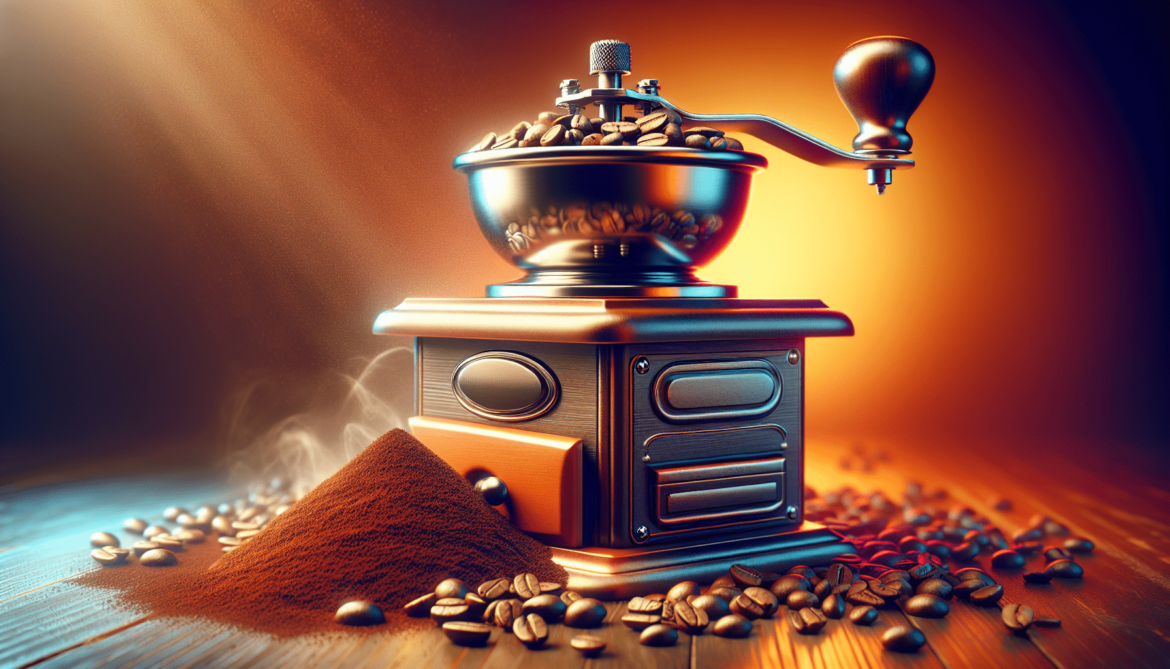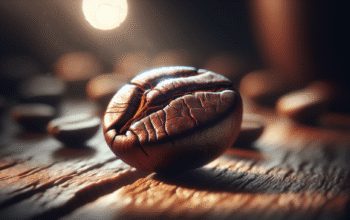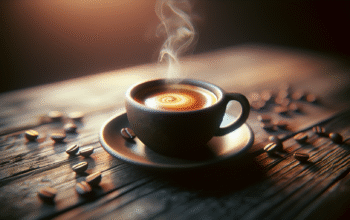If you’re a coffee lover looking to elevate your brewing experience, then understanding the best way to grind coffee beans is essential. Achieving the perfect grind consistency is key to extracting all the flavorful oils and aromas from your beans, resulting in a rich and satisfying cup of joe. In this article, we’ll explore different methods of grinding coffee beans and provide you with valuable tips to help you achieve that perfect grind every time. So grab your favorite mug and get ready to discover the secrets to unlocking the full potential of your coffee beans.
Choosing the Right Grinder
When it comes to grinding coffee beans, choosing the right grinder is essential. There are two main types of grinders to consider: blade grinders and burr grinders.
Blade Grinders
Blade grinders work by using a spinning blade to chop the coffee beans into smaller pieces. These grinders are typically more affordable and compact, making them a popular choice for many coffee enthusiasts. However, blade grinders aren’t as consistent in their grind size, which can affect the flavor of your coffee. If you’re looking for convenience and are willing to sacrifice a bit of consistency, a blade grinder might be the right choice for you.
Burr Grinders
Burr grinders, on the other hand, are designed to provide a more precise and uniform grind. These grinders use two burrs, one stationary and one rotating, to crush the coffee beans into even particles. The result is a more consistent grind size, which can greatly enhance the flavor and aroma of your coffee. Burr grinders are usually more expensive than blade grinders, but if you’re serious about your coffee, investing in a quality burr grinder is definitely worth it.
Selecting the Optimal Grind Size
The grind size of your coffee beans plays a crucial role in the extraction process and ultimately determines the flavor of your brew. Here are the three main categories of grind size to consider:
Coarse Grind
A coarse grind is characterized by large particles of coffee beans. This grind size is commonly used for brewing methods like French press and cold brew. The larger surface area of the coarse grind allows for a slower extraction process, resulting in a fuller-bodied and less bitter cup of coffee.
Medium Grind
A medium grind falls in between a coarse and fine grind. It is commonly used for brewing methods like drip coffee and pour-over. The medium-sized particles allow for a balanced extraction, producing a well-rounded and flavorful cup of coffee.
Fine Grind
A fine grind consists of small, finely ground coffee particles. This grind size is typically used for espresso and Turkish coffee. The finer particles aid in a faster extraction, resulting in a concentrated and intense flavor profile.
Measuring the Coffee Beans
To achieve the desired strength and flavor in your coffee, accurately measuring the coffee beans is crucial. There are two main methods to consider: weighing the beans and using a scoop.
Weighing the Beans
Weighing the coffee beans provides the most precise measurement and allows for consistency in each brew. Using a kitchen scale, simply measure the desired amount of coffee beans according to your preferred brew ratio. This method ensures a consistent and repeatable coffee experience each time.
Using a Scoop
Using a scoop is a more traditional and less precise method of measuring coffee beans. You can use a standard coffee scoop, which generally holds around 2 tablespoons of coffee beans. While this method may not offer the same level of accuracy as weighing the beans, it can still be effective in achieving a good cup of coffee.
Grinding Techniques
Now that you have chosen the right grinder and measured your coffee beans, it’s time to focus on the grinding techniques. The way you grind your coffee beans can greatly impact the final result of your brew. Here are a few techniques to consider:
Pulse Grinding
Pulse grinding involves grinding the coffee beans in short bursts or pulses rather than continuously. This technique allows you to have more control over the grind size and helps prevent overheating of the grounds. By pulsing the grinder, you can achieve a more uniform grind and avoid any uneven extraction.
Constant Grinding
Constant grinding, as the name suggests, involves running the grinder continuously until you achieve the desired grind size. This method is more suitable for burr grinders, as they offer better consistency and control over grind size. Constant grinding can be beneficial when you want to grind a larger batch of coffee beans quickly and efficiently.
Sifting the Grounds
Sifting the grounds is an optional step that can help remove any larger or smaller particles that may result from the grinding process. By using a fine-mesh sieve or sifter, you can separate the desired grind size from any inconsistencies. This technique is particularly useful if you are striving for a more precise and uniform grind.
Avoiding Common Mistakes
While grinding coffee beans may seem straightforward, there are a few common mistakes to avoid that can negatively impact the flavor of your brew.
Grinding Too Coarsely
Grinding your coffee beans too coarsely can result in a weak and under-extracted cup of coffee. The water will flow through the grounds too quickly, leaving you with a bland and unsatisfying brew. To avoid this, consider adjusting your grinder to a finer setting or increasing the extraction time.
Grinding Too Fine
Conversely, grinding your coffee beans too fine can lead to over-extraction and a bitter taste. The water will struggle to flow through the grounds, resulting in an overly strong and unpleasant brew. If your coffee tastes bitter, try adjusting your grinder to a slightly coarser setting or decreasing the extraction time.
Overheating the Grinder
Overheating your grinder can cause the coffee beans to release oils prematurely, resulting in an altered flavor and potentially damaging your grinder. To prevent this, avoid grinding large quantities of coffee beans at once and give your grinder breaks between batches if needed. Additionally, consider investing in a grinder with built-in cooling mechanisms for optimal performance.
Storing the Ground Coffee
Now that you have freshly ground coffee, it’s important to store it properly to preserve its freshness and flavor. Here are a few tips for storing your ground coffee:
The Importance of Freshness
Coffee beans start to lose their freshness and flavor once they are ground due to increased exposure to oxygen. It’s best to grind your coffee beans just before brewing to ensure the freshest cup of coffee possible. However, if you have excess ground coffee, storing it properly can help prolong its freshness.
Air-tight Containers
To minimize the contact with oxygen, store your ground coffee in an air-tight container. Choose a container made of glass or stainless steel, as these materials provide excellent protection against air and moisture. Avoid using plastic containers, as they can allow air to seep in over time.
Avoiding Moisture
Moisture is another enemy of freshly ground coffee, as it can lead to a loss of flavor and aroma. Ensure that your storage container is kept in a cool, dry place away from direct sunlight and humidity. Avoid storing your ground coffee in the refrigerator or freezer, as the moisture can adversely affect the flavor.
Experimenting with Extraction
Once you have mastered the basics of grinding coffee, you can start experimenting with different extraction techniques to discover new flavors and nuances in your brew. Here are a couple of ways to experiment with extraction:
Changing Brew Methods
Different brew methods can yield unique flavor profiles, even with the same coffee beans. Try brewing your coffee using methods such as pour-over, French press, or espresso to experience the varying tastes and strengths that each method offers. Each brewing technique extracts the flavors differently, allowing you to explore a whole new world of coffee possibilities.
Adjusting Brew Time
Another factor that can significantly impact the extraction is the brew time. Experiment with longer or shorter brew times to see how it affects the flavor of your coffee. Generally, a longer brew time extracts more flavors, while a shorter brew time results in a crisper, lighter flavor. Find the sweet spot that suits your taste preferences and enjoy the journey of discovering your perfect cup of coffee.
The Role of Water Temperature
Water temperature is another critical aspect to consider when brewing coffee. The temperature of the water can affect the extraction process and ultimately impact the flavor of your brew.
Finding the Optimal Temperature
The optimal water temperature for brewing coffee typically falls between 195°F (90.5°C) and 205°F (96°C). This range allows for proper extraction of the coffee’s oils and flavors without scorching the beans. If your water is too hot, it can result in an overly bitter brew, while water that is too cold may produce a weak and under-extracted cup of coffee.
Effects on Extraction
Lower water temperatures tend to extract more acidity from the coffee, resulting in a brighter and more vibrant cup. Higher water temperatures, on the other hand, can extract more bitterness and heavier flavors, resulting in a fuller-bodied cup. Experimenting with different water temperatures can help you find the perfect balance based on your personal taste preferences.
Cleaning and Maintaining Your Grinder
To ensure consistent and high-quality coffee, it’s essential to properly clean and maintain your grinder. Here are a few tips to help you keep your grinder in top condition:
Regular Cleaning
Cleaning your grinder on a regular basis removes any coffee residue or oil buildup that can affect the flavor of your brew. Consult the manufacturer’s instructions for the recommended cleaning routine. Typically, this involves disassembling the grinder, brushing away any loose particles, and wiping down the components.
Grinder Maintenance
In addition to regular cleaning, make sure to maintain your grinder by following the manufacturer’s guidelines. This may include lubricating moving parts, replacing worn-out burrs, or adjusting grind settings as needed. Regular maintenance helps prolong the lifespan of your grinder and ensures its optimal performance.
Exploring Alternative Grinding Methods
While blade grinders and burr grinders are the most common options, there are alternative methods to consider for grinding your coffee beans.
Hand Grinding
Hand grinding involves using a manual grinder, usually with a burr mechanism, to grind your coffee beans. This method allows for more control over the grind size and can be a great option for those who enjoy the process of handcrafting their coffee. Hand grinding can also be a portable solution for camping or traveling, as it doesn’t require electricity.
Burr Grinder Attachments
If you already own a kitchen appliance with a motor, such as a stand mixer or food processor, you may be able to find burr grinder attachments. These attachments allow you to transform your existing appliance into a burr grinder, saving you both space and money. Keep in mind that the grind consistency may not be as precise as a dedicated burr grinder, but it can still be a viable option for occasional coffee grinding.
In conclusion, grinding coffee beans is a crucial step in the coffee brewing process that directly impacts the taste and quality of your cup. By choosing the right grinder, selecting the optimal grind size, measuring the coffee beans accurately, employing various grinding techniques, avoiding common mistakes, storing the ground coffee properly, experimenting with extraction methods, considering the water temperature, cleaning and maintaining your grinder, and exploring alternative grinding methods, you can elevate your coffee experience to new heights. Enjoy the journey of discovering the perfect grind for your preferred brewing method, and savor every sip of your freshly brewed cup of coffee.



